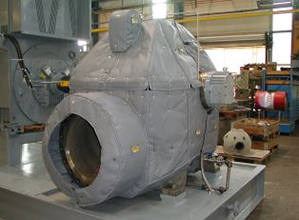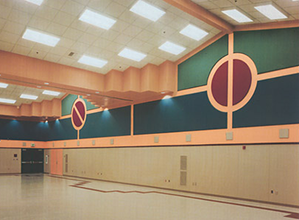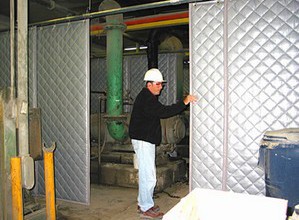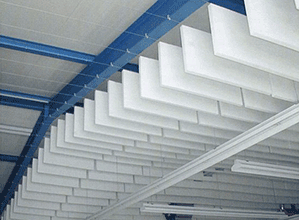Establishing Your Noise Management Strategy
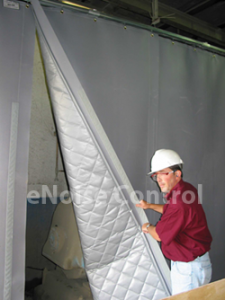 Every smart strategy has a clear goal. Setting a baseline for your noise control strategy keeps you on track and helps you stay away from potential OSHA violations. Depending on the size of your organization, noise problems can get rather complex. It may take a few years to achieve all of your goals.
Every smart strategy has a clear goal. Setting a baseline for your noise control strategy keeps you on track and helps you stay away from potential OSHA violations. Depending on the size of your organization, noise problems can get rather complex. It may take a few years to achieve all of your goals.
There is no one solution that fits all problems. You need to tailor your noise control plan to meet your own needs. However, in general there are several factors to consider when defining a noise problem and choosing the most feasible maintenance strategy. Below is a list of a few of these factors.
- Type of noise
- Noise levels and temporal patterns
- Noise sources
- Noise acoustics
- Noise propagation pathways
- Frequency distribution
- Number of workers exposed to the noise
Next, we will review our list of common strategies to help you address your noise level.
1. Administrative Control
The most basic approach to noise management is to reduce noise levels as much as possible. Below is a list of options this can include.
- Providing a quiet area for taking lunch and short breaks
- Rotating tasks for workers in noisier areas into quieter areas
- Installing perforated metal or interior building insulation for better sound absorption
- Compartmentalizing known noise level offenders by having sealed doors for “sound rooms” to separate them from the rest of production activity
If the noise problem persists even after you have implemented these kinds of solutions, reduce the duration of workers’ exposure as much as possible. This can be done by decreasing overall shift times or restricting the operating hours of noisy activities to keep community noise impacts at a minimum.
However, if there is still a problem, you can also provide personal hearing protection in certain areas of your facility. Likewise, provide appropriate training and safety guidelines to your workers, maintain the equipment on a regular basis, and replace any worn or unbalanced working pieces.
2. Buy Quiet
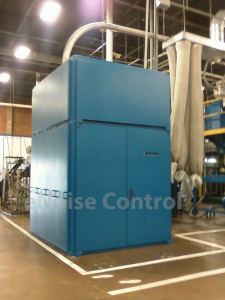 This strategy ensures that the business does not buy any more noise than it already has. “Buying quiet” is especially recommended if you are setting up a new facility. When your facility is in the design phase, it will be easier to plan to prevent noise issues. Even though you may still face problems after initial installations, buying quiet is usually cheaper and the solutions work better than attempting to control noise after installation. You also tend to have more options for noise control during the design stage.
This strategy ensures that the business does not buy any more noise than it already has. “Buying quiet” is especially recommended if you are setting up a new facility. When your facility is in the design phase, it will be easier to plan to prevent noise issues. Even though you may still face problems after initial installations, buying quiet is usually cheaper and the solutions work better than attempting to control noise after installation. You also tend to have more options for noise control during the design stage.
The first step is to determine a maximum acceptable noise level for new equipment. Set the noise criteria for sensitive locations in which noisy machinery operates or will operate. The acceptable noise level should be significantly lower than the noise exposure goal. This allows you to take into account the possibility of adding new equipment that contributes to the existing noise level on-site. Make sure to include noise control fixtures, such as sound barriers, vibration isolation systems, and factor walls with higher sound transmission loss.
During the design stage, discuss the different arrangements of your building and the equipment to be installed in detail. In general, you don’t have to pay too much attention to the shape of the building space as you can build up reverberant fields in spaces of any shape. Focus on organizing the production lines to make sure that noisy equipment is separated from workers as much as possible.
3. Source Noise Control
This strategy requires you to identify the cause of noise and determine what modifications need to take place in order to provide the best means of noise control. This can be done either directly or indirectly. In general, controlling noise at the source can involve one or more of the following:
- Maintenance. This includes the replacement or adjustment of worn, loose parts, lubrication of moving parts, and use of properly shaped cutting tools.
- Substitution of equipment. You can replace presses for hammers, belt conveyors for roller conveyors, hydraulic for mechanical presses, rotating shears for square shears, and so on.
- Substitution of parts of equipment. Possible solutions are modification of gear teeth by substituting spur gears with helical gears, replacing gear drives with belt drives, metal gears with plastic gears, and solid wheels with pneumatic tires.
- Modification in work methods. There are different ways to change the way your facility operates. For example, alternate workers’ schedules, especially ones who work in noise areas; but have a clear separation between noise and non-noisy processes. Change manufacturing methods – for instance, molding holes in concrete instead of cutting concrete components after production. Go for large, slow machines rather than smaller, faster ones.
- Substitution of processes. Possible replacements include opting for pressing rather than rolling or forging, welding for riveting, moving from impact action to progressive pressure action, and replacing circular saw blades with damped blades.
4. Active Noise Control
Active noise control is different from conventional noise control techniques. This method reduces noise levels by introducing a sound wave that is a mirror image of the unwanted noise. This sound cancellation wave has equal amplitude and frequency, but of opposite phase. Ultimately, it interferes with the undesired noise without physically blocking the sound path.
An active noise control system usually consists of an input microphone for detecting unwelcome noise, a controller system for generating the anti-noise, a loudspeaker for emitting the anti-noise, and an error microphone for refining the anti=noise signal via the controller. This method has been applied to combat aircraft interior and fan and pump noise. It can also be found in some ear defender products.
Though they come with many advantages, including power consumption savings and effectiveness in dealing with low frequency tonal noise, active noise control systems are quite expensive. They also do not work well with unpredictable, higher frequency noise. As the signal fluctuates more rapidly, it is much more difficult for the electronics to keep up. In addition, this system should not be applied outdoors because it can become damaged by high temperatures and wet conditions.
Implementing this Strategy
Noise is a serious occupational hazard and all businesses must actively seek ways to appropriately address it. As noise control problems can be rather complex, conducting regular noise audits and collecting sound level measurements is critical in ensuing no potential hazard is overlooked.
Understanding your business’ operations and work process is key in finding the right mixture of solutions that work best for your facility. A successful noise control program means that everyone within your organization is aware of their responsibilities and knows what action they need to carry out in order to help keep everyone safe.
Do you need help finding the best strategy and practices to control sound disturbances in your facility? We can help you develop a noise control plan that fits your current business situation. eNoise Control’s experienced specialists and technicians can work with you. Contract us today to learn more about how we can assist with your noise control application.
